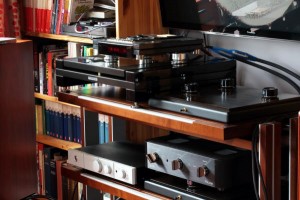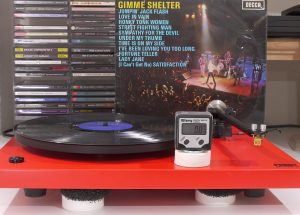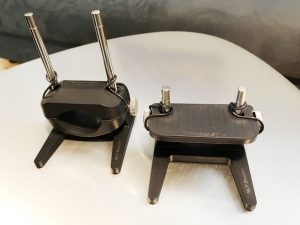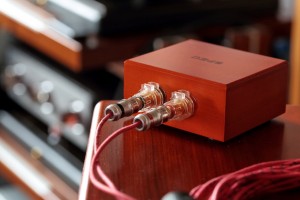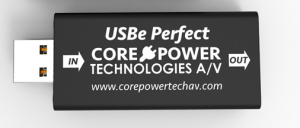This time we got for a review the anti-vibration feet of the German company Finite Elemente, Ceraball and Cerabase Classic models. This brand is one of the precursors among specialized firms fighting against unwanted vibrations, which with these products returns to the market after a few years absence. We published an interview with the current boss, Mr. Luis Fernandes, beginning of January. The test that you are reading is therefore the second part of this publication.
I have a soft spot for Finite Elemente products (the company uses lowercase letters for their name: 'finite elemente', but I will stick to the normative spelling: 'Finite Elemente'). I got to know them quite a long time ago and immediately got enchanted by them on the one hand with a perfect make and finish, and on the other with the technical expertise used to create them.
Finite Elemente and High Fidelity
At a time when the company was taking its first steps, talking about "anti-vibration feet", "anti-vibration platforms" or "anti-vibration racks" resembled a discussion about UFOs. No one in the world of technology believed in it, and in the world of audio it took a lot of effort to convince anyone to even make an effort to try these products out. We did it in January 2008, when together with the Krakow Sonic Society, during the 51st meeting we tested a number of different insulators, including three made by FE: CeraBall Universal, CeraPuc and CeraBase (KTS No. 51).
Cerabase Slime,that I used with my Leben CS-300 (Special Edition)
The results of assessments were clear and repeatable, and as a result of this test some of us bought these feet for our devices—for years I used them under the Ancient Audio Lektor AIR V-edition CD Player. But they were not alone in my system. In December 2013, the object of my audio dreams materialized in my room, and I've been enjoying it ever since—the Pagode Edition rack (HF No. 116). Although I can see some things that should be improved in it - primarily counter-tops - as a whole it is still an object of applied arts as well as a great tool
Competition
One of the strengths of Finite Elemente products was solid knowledge they were based on and the ability to use it properly. For example, when developing the Pagode racks, FE engineers cooperated with scientists from the Fachhochschule Dortmund (University of Applied Sciences in Dortmund). The team measured and optimized these products, and prepared the theoretical foundation contained in the document entitled Sound optimization of hi-fi racks using resonator technology.
Dissembled Ceraball - you can see the ball-interface
The best known FE technique, however, was the one found in the manufacturer's anti-vibration feet. Namely Cera was at that time an almost revolutionary idea. It was based on an idea that a ceramic ball was placed between the two surfaces decoupled from each other. The physical basis of such a solution was nicely presented by Mr. Jarek Korbicz, the Stacore designer, when he explained the operation of the upper board of the Advanced platform:
The Advanced platform is a unique solution because it contains a second, next to pneumatic, level of vibration damping based on roller bearings. It improves significantly decoupling of vibrations in horizontal plane and in this way the STACORE ADVANCED gains so-called six-axis vibration decoupling—a Holy Grail of vibration control systems. HF No. 155, highfidelity.pl
The Stacore company used tungsten carbide balls in its design, but the principle is the same as in Finite Elemente feet and it is also this German company that inspired such brands as: Franc Audio Accessories, Pro Audio Bono, and HiFistay.
CERAfamily
The renewed and restructured Finite Elemente currently offers only five products, only feet, and we will have to wait for re-implementation of the platforms and racks. The entire series of feet is called CERAfamily and it includes: the largest Cerabase classic, Cerabase compact, Cerabase slimline, Cerapuc, and Ceraball.
Three different CERA color versions presented during Munich High End Show 2018
This is the third generation of these products. Now their body is made of polished stainless steel, but there are also "special" versions available with 24-carat gold plated brass and black-chromed brass. As Mr. Luis Fernandes told me, company's boss, each of them sounds different. The new version of feet has also received a different type of packaging. Over the years, we have become accustomed to FE products coming in handy, damage-resistant plastic trays. New are delivered in a wooden box, put inside a cardboard box.
Cerabase classic is FE's top model. The feet are quite high, they measure 50-60 mm high (height is adjustable) and although the company sees them in "all applications," they will find their place where you require them to be able to support a big weight—they are specified in the range from 50 to 500 kg while using four feet; when using three of them the maximum lifting capacity drops slightly to 375 kg. Considering such big weights we are actually talking about loudspeakers, anti-vibration racks and large power amplifiers as most likely applications.
They are made of three steel elements, three balls and an auxiliary element. So there is a wide, "foot-like" base—the whole design rests on it. There are three half-spheres for three balls milled in it —this is the main decoupling element or, as Mr. Fernandes says: coupling points. The base is milled with a pin that features a rubber ring—this is the only element that after several years of using should be checked (rubber wears off over time).
On top of this pin one puts a cylinder threaded from the top. Due to the thread, one can adjust the height of the foot, and thus level the device placed on it; the adjustment range is 10 mm. From the top one puts a rubber disc on the foot, which prevents the device from slipping; the rubber disc hides halfway in the sub-sphere. But one can also screw the feet to the component or speaker. The set includes M6 and M8 screws.
Ceraball are smallest feet in FE's range. They have a characteristic shape of a truncated "bullet", also used by the Polish company Pro Audio Bono. They are conceived as a support for small devices and speakers. The manufacturer claims optimal weight of 5-40 kg range, but the permissible loads are much higher—300 kg for a set of four feet and 225 kg for three. They are 30 mm high, so they will not dominate the look of the device: the wider part has a diameter of ø 55 mm and the narrower of ø 35 mm. Just like Cerabase classic feet, the Ceraball's height can adjusted within 10 mm range.
Finite Elemente in High Fidelity
- TEST: Leben CS-300 X (SP) [Custom Version] integrated amplifier – a modification
- TEST: Finite Elemente PAGODE EDITION HD-09, CERABASE COMPACT, RESONATOR 1000 Hz anti-vibration platform, anti-vibration feet, anti-vibration element
HOW WE LISTENED TO
The Ceraball feet were tested under the Ayon Audio CD-35 High Fidelity Edition, comparing them with our long-term reference, the Franc Audio Accessories Ceramic Disc Classic. In turn, the Cerabase Classic we listened to paired with the Harbeth M40.1 speakers, and more specifically they were used under made by Mr. Ken Ishiguro Acoustic Revive stands. The Finite Elemente feet were placed under stands and replaced the Audio Replas quartz feet. Let me remind you that not long ago in the same way I tested another iteration of this type of feet, the Kepler by Divine Acoustics.
Recordings used for the test (a selection)
- Anima Sacra, perf. by Jakub Józef Orliński, Il Pomo D’Oro, cond. by Maxim Emelyanychev, Erato 9029563374, CD (2018)
- Top 12 in Gold Plus. Music That Resounds In Live, Golden String GS DXD 001, Gold-CD (2010)
- Artur Rubinstein, Artur Rubinstein plays Chopin, Polskie Nagrania MUZA/Polskie Nagrania PNCD 487, CD (1984/2008)
- Charlie Mingus, Tijuana Moods, RCA Records/Original Records Group ORG 174-3, SACD/CD (1962/2015)
- Jean-Michel Jarre, Electronica Project. Vol. 1 Time Machine, Columbia Sony Music Entertainment 88875108352 , Box No. 465/1000, CD + 2 x 180 g LP + FLAC 24/96 (2015); review HERE
- Miles Davis, Bitches Brew, Columbia/Mobile Fidelity Sound Lab UDSACD 2-2149, "Special Limited Edition No. 1229", 2 x SACD/CD (1970/2014)
- Starboy, Starboy, XO • Republic 5727592, CD (2016)
SOUND
Feet featuring ceramic balls as a decoupling element differ from each other, often quite significantly, but they also have common features thanks to which they are such an attractive proposition. It was also clear with the Ceraball feet. It is about above all the sound density. The sound, even of well-known recordings with them becomes saturated and in some way "calm". It is not about suppressing the dynamics, but about clearing the "foreground," which means that we do not have to wade through some distractions to the music, hardly focus to get carried away with it.
Ceraball The Ceraball allow you to get access to this "club" without pre-selection, through the VIPs entry. It's a very smooth and dense sound. From other feet, like the Ceramic Disc Classic by the Polish company Franc Audio Accessories, they differ in the different perspective they present events on the stage from. Everything is placed a bit further away with them, has a slightly smaller volume. Pawel Skulimowski's feet (FAA) add some density to the sound, enlarge it, and that's what I like about them. But I perfectly understand a different approach, in which the sound should be a bit more distanced.
And distanced in the case of Ceraball does not mean at all unremarkable. It's a warm, dense sound, with smooth edges and a nice top end. These particular feet slightly, really lightly, illuminate the range around 1-2kHz. It results in a slightly lighter but still creamy sound with a strong bass. Selectivity is not the most important element in this case, and the resolution manifests itself in good handling of tonality and bodies. However, the sound is not as detailed as with the competition.
These are very good, nice "sounding" feet, while not that expensive. But it's also clear that the competition that took inspiration from Finite Elemente's work did not miss their chance and offered truly competitive products. Five or six years ago Ceraball could be recommended without hesitation. Now the recommendation is equally strong, but with the caveat: you need to compare them with other feet of this type to determine whether the differences between them are important for you or not and if this set of features matches your system and your temperament.
Cerabase classic The largest feet in the Finite Elemente lineup, intended for heavy amplifiers and loudspeakers, retain the common sonic features I mentioned at the beginning. They are also similar in several points to the Ceraball feet, which means they modify the sound in a similar way. Everything is smooth, slightly warm and dense with them. But they also seem to have their own goals to strive for.
It's a sound focused on the middle of the band. The vocals and other instruments in this range are richer and slightly approximated, which exposes their density and size. The volume of the sound is not very large, but clearly larger than with Ceraballs. Everything is presented also quite close to us and we focus on direct sounds. The Ceraballs in turn underlined spatial effects, reverbs, decay. Here, with the Cerabase classics, we "see" first of all the foreground and sustain, fill-in, it's something that thickens the sound.
The lowest bass is a bit lighter than with the Acoustic Replas quartz and is also not so precisely controlled. I did not have much of a problem with it, but if the ultimate control of the lowest part of the range is your thing you need to check whether with these feet you can get expected results in your system. Everyone will like - I have almost 100% certainty about it - the fluency of this sound. The top is smooth, silky but selective. The midrange is slightly warm, which will do good for most recordings. Together, this makes for a pleasant, smooth sound.
Summary
The Finite Elemente feet have been a benchmark for the entire industry for a very long time. And they still are. Admittedly, new companies have grown up that have an equally interesting products, but what Finite does best is still impressive. These feet introduce calmness and order. to the sound. When used in a system together they gently lower tonal balance and warm the presentation up. But not so much that it would become unequivocally warm. It is simply pleasant. They are not masters of selectivity or bass control, but it's not really their weakness. It's a good thing that this company came back to the audio scene, I'm sure it's a good starting point for its new designs.
WHAT'S NEXT?
Unexpected, at least for us, outsiders, bankruptcy of a company such as Finite Elemente should be a warning that nothing in the world last for ever and even outstanding, respected, well-known specialists can suddenly disappear. I am so happy that there is a group of people who want to reactivate it. They do have a proper base for that and it is unique. They began with element that was easiest to implement, the anti-vibration feet, introducing small modifications related to the material of their bodies. Probably sooner or later they will also reactivate Pagode and Pagode Edition racks, and perhaps also the Spider.
You have to know, however, that it is not enough to get back to the top, and I guess nothing else really interests people of the FE. In the last few years, the competition has achieved great results both by adapting the solutions popularized by this company, primarily the decoupling model based on a ball bearing, as well as proposing its own proprietary solutions. Today Harmonic Resolution Systems (HRS), Artesania Audio, and Kaiser Acoustics they all propose equally advanced solutions, and their products look even more beautiful.
So that the Finite Elemente company could really reborn it needs not just to refresh the lineup, but to modernize it. And above all they need a new direction that would become its hallmark—solution people would associate it with. Otherwise it will be just yet another, very good, but one of many companies dealing in vibration damping products. And yet the Finite Elemente deserves to be more than just one of many manufacturers.
CERABALL CERABASE CLASSIC Anti-vibration feet
Price (when reviewed):
240 EUR/4 pc. 720 EUR/4 pc.
Finite Elemente Köpf Möhring GbR
Luis Fernandes Am Heimekesberg 11
33106 Paderborn Germany
MADE IN GERMANY
Provided for test by: Finite Elemente
Text: Wojciech Pacuła
Images: Wojciech Pacuła
Transation: Marek Dyba


















